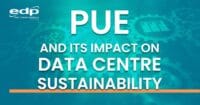Managed PDUs: Unlocking Power Efficiency for Modern Data Centres
 In today’s fast-changing world, Data Centre Managers need to manage power effectively. This helps improve performance. Managed Power Distribution Units (PDUs) support this need.
In today’s fast-changing world, Data Centre Managers need to manage power effectively. This helps improve performance. Managed Power Distribution Units (PDUs) support this need.
Managed PDUs, a type of intelligent PDU, offer better control and monitoring than basic, metered, and switched models. They are important for today’s high-demand applications. These include Artificial Intelligence (AI), High-Performance Computing (HPC), and Machine Learning (ML).
These advanced PDUs distribute power and provide real-time insights into energy use and performance. This helps Data Centre Managers make smart choices that improve efficiency and sustainability.
In this article, we will look at Managed PDUs. We will explain how they differ from other PDUs. We will also discuss the many benefits they offer to modern Data Centres. These benefits highlight their important role in supporting new technologies and improving overall efficiency.
A Managed PDU is a smart device. It distributes electrical power to servers and other equipment in a Data Centre server rack. Managed PDUs are different from basic PDUs. While basic PDUs only provide power outlets, Managed PDUs have many features. They allow for remote monitoring, control, and management of power use.
Functioning as the central nervous system of your Data Centre’s power infrastructure. They give you real-time information about power use. This helps you find problems before they become expensive downtime. Crucially, Managed PDUs enable remote control of individual outlets, facilitating power cycling of unresponsive equipment and optimising power distribution for maximum efficiency. These capabilities are essential for maintaining a stable and reliable Data Centre environment, especially in today’s demanding landscape.
To understand Managed PDUs better, compare them to other types of Intelligent PDUs: Basic, Metered, and Switched. Knowing the differences between each type helps you choose the right PDU for your needs and environment.
- Basic PDUs: Consider these the simplest form of PDUs—a direct replacement for standard power strips. They only provide basic power distribution. They route power from a source to several outlets. There are no monitoring or control features. Basic PDUs are made for low-density areas that do not need advanced power management. They offer a cost-effective way to meet simple power distribution needs. They are ideal where budget constraints are a primary concern and detailed power usage tracking is unnecessary.
- Metered PDUs: Upgrade to Metered PDUs to introduce real-time monitoring of aggregate power consumption. This feature lets you track power usage at the PDU level. It gives useful insights into power load and helps find possible imbalances. With this information, users can proactively address potential issues, such as overloading circuits, and optimise power distribution. Metered PDUs provide better visibility, but they do not have remote-control features like Managed PDUs. This limits their ability to manage connected devices from a distance.
- Monitored PDUs: Monitored PDUs extend Metered PDU functionality by providing power monitoring at the outlet level, enabling detailed power metric analysis for individual outlets.
- Switched PDUs: Enhance functionality of Metered PDUs further by utilising Switched PDUs, which add remote on/off switching capabilities to individual outlets. This important upgrade allows remote power cycling of connected devices. This feature is key for rebooting unresponsive servers or managing equipment without being there in person. Switched PDUs are very helpful in places where remote access and control are important. They reduce downtime and the need for on-site support.
- Managed PDUs: Use Managed PDUs to include all features of Metered, Monitored and Switched PDUs. They combine power monitoring and remote switching. They also add advanced features for detailed power management at the individual level. Add features like environmental monitoring for temperature and humidity, customisable alerts to notify administrators of potential issues before they get worse and ensure smooth integration with Data Centre Infrastructure Management (DCIM) software for centralised monitoring and control.
Managed PDUs provide the most granular level of control and visibility, enabling users to optimise power usage, improve energy efficiency, proactively prevent downtime, and enhance overall uptime. Furthermore, the data collected by Managed PDUs provides valuable insights for capacity planning and resource allocation.
Managed PDUs are the top choice for power management technology. They provide a wide range of features for Data Centre environments. These features focus on reliability, efficiency, and control, which are very important. The significant benefits provided by Managed PDUs of improved uptime, reduced energy costs, and enhanced management capabilities justify their investment. They are a crucial component for modern Data Centres striving for optimal performance and operational efficiency.
In a world where data reigns supreme, maintaining Data Centre uptime is crucial. A single outage can cause significant financial losses, damage reputations, and disrupt critical services. In this context, intelligent power distribution becomes a necessity, not a luxury. Managed Power Distribution Units (PDUs) ensure Data Centre efficiency and reliability by transforming the basic job of power delivery into a strategic advantage.
They achieve this by:
- Detecting Problems Proactively: Real-time power monitoring identifies potential issues like overloaded circuits, imbalanced loads, or failing equipment before they escalate into costly downtime. Threshold alerting sends immediate notifications, enabling IT staff to address issues before they affect critical systems. This shift from a reactive to a more active stance minimises disruptions and maintains optimal performance.
- Enabling Remote Management: Managed PDUs provide remote power cycling capabilities, allowing quick resolution of issues and service restoration without manual intervention. This feature is crucial for geographically dispersed Data Centres or situations with limited immediate access. Through a centralised management interface, you can reboot unresponsive servers, power down unused equipment, and schedule power cycles for maintenance, saving time, resources, and potentially preventing escalating problems.
- Facilitating Strategic Capacity Planning: Detailed power consumption data, gathered at individual outlet levels, allows for accurate forecasting of future power needs and planning for capacity upgrades. No more guesswork! By understanding granular power usage trends, you can optimise power distribution, identify stranded capacity, and make informed infrastructure investment decisions, preventing over-provisioning and optimising resource allocation to manage increased demands without risking instability.
- Enhancing Energy Efficiency: Monitoring power usage, identifying inefficiencies like “ghost servers,” and tracking Power Usage Effectiveness (PUE) enables optimisation of power distribution and reduction of energy consumption, leading to significant cost savings. Managed PDUs help identify and eliminate wasted energy, implement power capping strategies, and right-size your cooling infrastructure, contributing to a more sustainable and cost-effective Data Centre operation.
- Improved Uptime: The combined benefits of actively managing problem detection, remote management, and accurate capacity planning contribute to improved uptime and reduced outage risks. These functionalities create a more resilient and reliable power infrastructure, resulting in minimised downtime, increased productivity, and enhanced peace of mind.
Managed PDUs go beyond merely distributing power; they actively manage and optimise the power infrastructure to ensure maximum efficiency, reliability, and business continuity. They are an essential component of a modern, resilient, and cost-effective Data Centre strategy.
Implementing Managed PDUs can significantly improve Data Centre operations, extending benefits beyond simply preventing downtime. They offer a range of advantages that impact everything from budget to security to resource allocation. Consider the following key improvements:
- Reduce Operational Costs: Gain granular insight into power consumption at the outlet level with Managed PDUs, allowing you to identify and eliminate energy waste. Reduce power use and boost energy efficiency with features like load balancing and remote power cycling. These tools can lower your electricity bill and cut overall costs. This results in tangible savings that contribute directly to your bottom line.
- Improved Uptime: Actively manage problem detection and remote management capabilities to maintain business continuity. Managed PDUs continuously monitor power parameters and alert administrators to potential issues, such as overloads or voltage fluctuations, before they cause downtime. Remote power cycling allows quick resolution of minor equipment issues without onsite intervention, minimising disruption and ensuring critical systems remain operational.
- Enhanced Security: Protect your power infrastructure from unauthorised access and potential breaches with robust security features in Managed PDUs, including remote access controls, user authentication, and encryption protocols. Tailor access levels to specific roles with granular permission settings, further reducing vulnerability. This is especially critical in multi-tenant Data Centre environments.
- Simplified Management: Centralise management and monitoring capabilities to simplify power management and reduce IT staff’s workload. Instead of manually tracking power consumption and troubleshooting issues at each rack, monitor and control all PDUs from a single, intuitive interface. This streamlined approach frees up valuable time for IT staff to focus on more strategic initiatives.
- Scalability: Easily scale Managed PDUs to accommodate growing power demands and evolving Data Centre needs. Whether adding new servers or expanding your footprint, integrate Managed PDUs into your existing infrastructure, providing the flexibility and agility needed to support future growth.
- Environmental Monitoring: Maintain optimal operating conditions for server health and performance with integrated environmental sensors that provide valuable insights into temperature and humidity levels within your racks. Proactively identify and address potential hot spots or areas with excessive humidity, extending the lifespan of your equipment and preventing costly damage.
- Make Data-Driven Decisions: Leverage the wealth of data on power usage, environmental conditions, and performance metrics provided by Managed PDUs to make informed decisions about power management, capacity planning, and energy efficiency. Use this data to optimise power provisioning, identify opportunities for energy savings, and improve the overall efficiency of your Data Centre operations. Generate reports to track trends, identify anomalies, and demonstrate the ROI of your power management initiatives.
Investing in Managed PDUs represents more than just a purchase; it is an investment in the long-term health, resilience, and cost-effectiveness of your Data Centre. By delivering comprehensive power management, enhanced security, and valuable data insights, Managed PDUs empower you to optimise your operations, reduce costs, and ensure business continuity.
The rapid growth and use of modern technologies have raised the demand for Data Centre resources. These technologies include Artificial Intelligence (AI), High-Performance Computing (HPC), and Machine Learning (ML). This has put a lot of pressure on the current power infrastructure.
These technologies inherently consume significant power, as they require massive amounts of computing power to process complex algorithms and vast datasets. This results in escalating power densities and significantly higher energy consumption within Data Centres. To effectively support these power-intensive applications and maintain operational stability, organisations increasingly rely on Managed Power Distribution Units (PDUs).
Here’s how Managed PDUs crucially support specific power-hungry applications:
- AI and Machine Learning: AI and ML workloads characterise themselves by complex calculations, iterative processes, and the analysis of extraordinarily large datasets, demanding significant and sustained processing power. Managed PDUs supply a stable and reliable power flow to the servers and infrastructure behind these demanding applications. By preventing unplanned downtime and maintaining continuous power delivery, Managed PDUs directly enhance performance and accelerate the development and deployment of AI/ML solutions. Additionally, their monitoring capabilities help pinpoint power inefficiencies in these complex systems.
- High-Performance Computing (HPC): HPC environments, applied in areas like scientific simulations, financial modelling, weather forecasting, and advanced research, rely on extensive clusters of interconnected servers working in parallel to tackle computationally intensive tasks. These clusters demand massive computing resources and, consequently, substantial power. Managed PDUs deliver the necessary power distribution and monitoring capabilities to support these workloads effectively. They ensure each server receives the required power while providing real-time data on power consumption, allowing for informed decisions regarding capacity planning and optimisation. They also contribute to the reliability of complex simulations by avoiding power-related bottlenecks or outages.
- Edge Computing: Edge computing, which places computation and data storage closer together, is rapidly gaining traction as organisations aim to reduce latency and improve responsiveness for applications like IoT devices, autonomous vehicles, and augmented reality. In these decentralised environments, Managed PDUs play a vital role in ensuring reliable power distribution and enabling effective remote management at the edge.
Given the often remote and unmanned nature of edge locations, the remote monitoring and control capabilities of Managed PDUs are invaluable for maintaining uptime and minimising the need for costly on-site visits for troubleshooting and maintenance. They offer critical insights into power consumption and environmental conditions at the edge, enabling initiative-taking intervention and preventing service disruptions.
In each of these scenarios, Managed PDUs play a crucial role thanks to their granular control and comprehensive monitoring capabilities. They empower Data Centre operators to:
- Precisely Allocate Power: Operators can efficiently and accurately distribute power to specific servers, racks, or even individual components based on their actual needs. This targeted approach minimises wasted energy and prevents over-provisioning, leading to substantial cost savings.
- Optimise Power Usage: Operators leverage real-time data on power consumption, environmental conditions, and other key metrics to identify areas for improvement and fine-tune power usage for maximum efficiency. This process can involve adjusting server configurations, optimising cooling systems, or implementing power capping policies.
- Proactively Identify and Resolve Potential Problems: Managed PDUs contribute to Data Centre reliability and resilience through continuous power monitoring. Exceeding critical thresholds and displaying unusual patterns trigger alerts, empowering operators to address potential issues proactively. Timely intervention prevents power outages, equipment failures, and the associated costs of downtime.
- Improve Capacity Planning: By accurately tracking power usage trends, operators gain valuable insights for capacity planning and future infrastructure investments. This data-driven approach helps ensure that the Data Centre has sufficient power capacity to support future growth while avoiding unnecessary capital expenditures.
Managed PDUs are not merely a power distribution solution; they serve as a critical management tool for modern Data Centres striving to support the demanding power requirements of AI, HPC, ML, and edge computing applications. Their granular control, comprehensive monitoring, and proactive alerting capabilities are essential for optimising power usage, maximising uptime, and ensuring the long-term reliability and efficiency of the Data Centre infrastructure. They provide the visibility and control needed to navigate the complexities of modern Data Centre power management and meet the challenges of an increasingly power-hungry world.
Conclusion
In conclusion, Managed PDUs are an indispensable component of modern Data Centres. They stand at the forefront of innovation; advanced technology to support the efficiency of today’s complex computing needs. They comprehensively monitor, control, and manage to optimise power usage, enhance uptime, and reduce operational costs.
Their unparalleled control and insight into power distribution optimises Data Centre operations. By implementing Managed PDUs, you not only safeguard your infrastructure but also increase adaptability and responsiveness, enabling you to scale to accommodate emerging technologies like AI, HPC, and ML.
We hope this article has offered insight into the immense benefits of Managed PDUs and encourages you to explore options to transform your Data Centre into a more efficient and resilient hub of innovation.



